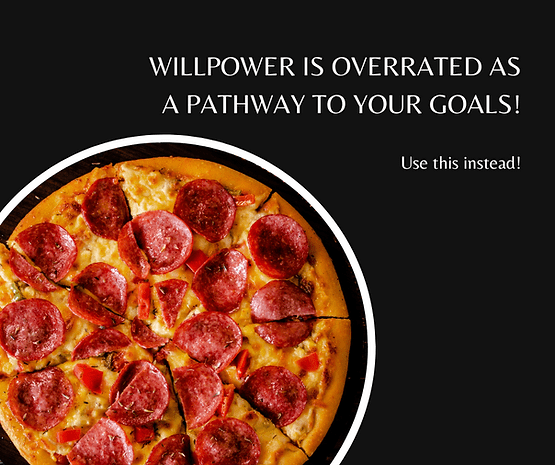Who Am I: How to Understand Who You Are Through an IFS Lens (Part 1)
Who am I? It’s an age-old inquiry that invites a personal exploration of the vast expanse that is our personality. And it simultaneously suggests that we are something at all. It was this question that led me down the path of becoming a therapist over two decades ago. I didn’t understand who I was, what I was doing, and why. I felt driven to engage in behaviors that I knew were harmful and that I wanted to change. At the same time, there were parts of me that didn’t want to change and didn’t know how to change! It wasn’t until I started paying attention to all the parts that felt these various ways that I could change. In this blog I’ll show you how to understand who you are, through an IFS lens.
This question also led me toward learning new modalities of healing for others as well as myself; IFS (Internal Family Systems) was one of those modalities. Using it, I am constantly discovering new parts of myself, and when sharing space with my clients, they are connecting with parts of themselves too. In the early stages of my counseling education, I was not introduced to IFS, and I was taught that we had one mind. However, as I’ve learned more from leading experts in the field, run my own experiments, and been a witness for my clients, it’s clear this is not the case.
To Understand Who You Are, You Must Embrace the Idea of Multiplicity
The mind is an amalgamation of energies that converge from within us, outside of us, and between us. As Dr. Dan Siegel, the founder of interpersonal neurobiology, shares, “Your mind is emergent – it’s beyond your physiology, and it exists in many different places at once” (Siegel DJ, Drulis C, 2023). This may not come as a surprise to you, or you may be reading this and feeling confused. No matter how you’re experiencing what you’re reading now, a part of you feels that way!
Parts Have Personalities
As I have embarked on my own personal journey of self-discovery and supported others as they’ve done so, what we’ve come to understand is the transformative power of embracing inner diversity. In the depths of our being, there exists a beautiful tapestry of different parts that make us who we are. While you are reading this, one part of you may be showing up judging my writing. Another part may be feeling excited to keep reading. And another part of you is thinking about what you’re going to eat for dinner. These parts represent a multiplicity of perspectives, emotions, and desires, each contributing to the rich and complex fabric of our inner world.

In this first blog of a multi-part series, I will introduce you to the idea of multiplicity inspired by the therapeutic model called Internal Family Systems (IFS) that has demonstrated evidence for its efficacy in mental health healing. I will share practices with you along the way so that you can, if you are inclined and if it feels safe, begin to get to know the various parts of you.
Parts Will Contradict Each Other
In the 1800s, Walt Whitman seemed to know what had not yet been revealed within the scientific community—that we contained multitudes. He would talk to the different parts of himself. If a part of you is showing up now, saying, “That’s crazy!”, just notice it. No doubt you’ve had to make a decision at some point and you’ve said, “Well, a part of me feels this way, and another part of me feels that way!” You’re not crazy. You’re multiple. 😊
Song of Myself, 51
1819 –1892
The past and present wilt—I have fill’d them, emptied them. And proceed to fill my next fold of the future.
Listener up there! what have you to confide to me? Look in my face while I snuff the sidle of evening, (Talk honestly, no one else hears you, and I stay only a minute longer.)
Do I contradict myself?
Very well then I contradict myself, (I am large, I contain multitudes.)
I concentrate toward them that are nigh, I wait on the door-slab.
Who has done his day’s work? who will soonest be through with his supper? Who wishes to walk with me?
Will you speak before I am gone? will you prove already too late?
How Embracing Our Parts Invites Self-Acceptance
By embracing inner diversity, we embark on a journey of self-acceptance, compassion, and self-connection. We recognize that each part holds wisdom, strength, and unique contributions. Through this exploration, we learn to appreciate the beauty of our multiplicity, celebrating the colorful tapestry of our inner worlds.
Understand Who You Are: What Gets in the Way
In this fast-paced world, which encourages comparison, hustling, success attached to money, image, and possessions, it’s easy to overlook or dismiss certain aspects of ourselves. Many of us are trying to conform to the masses, to what the culture deems worthy. We see others and wish we could be more like them, often denying who we are and missing the gifts already within us.
We may label some parts as “good” or “bad,” and unknowingly create an internal divide. However, in the realm of the Internal Family Systems (IFS) model, we discover a profound truth: every part has value and deserves to be honored. Even the parts of us that want to be prettier, who aren’t confident, who fear rejection, who experience doubt, and who feel anxiety or depression. These parts have a lot to share with us, if only we can turn toward them, to listen, to understand.

Throughout this series, we will delve into the concepts of inner diversity and the IFS model, guiding you towards a deeper understanding of the parts within you. We will explore practical strategies to cultivate compassion, acceptance, and collaboration among your parts and learn about how they can begin to operate with greater unification and harmony.
Turning Toward Our Parts
Please remember that this journey is not about achieving a singular, homogeneous self. To understand who you are, we practice embracing the beauty and complexity of our inner landscape, recognizing that every part plays a vital role in our growth and well-being.
It’s also about reconnecting with your core, your inner knowing, which knows no bounds of wisdom, clarity, and calm. We all have this core capacity. Call it Soul, call it your true nature. Many of us have just lost access to it. In the context of Internal Family Systems (IFS), this is called the Self, with a capital S. And your parts are just separate facets of your psyche, each with its own unique beliefs, emotions, desires, and memories, formed in response to various experiences and situations throughout your life.
In Part 2 of this series, we will define inner diversity, identify the different types of parts within us, and get a sense for their important roles. I’m excited to meet all of you! I hope you are too.

Understand Who You Are: A Starting Place
For now, what you might do is just take note throughout the day, all the different ways in which you think, the different emotions that you experience, and the various sensations that you experience in your body. These are some of the ways the parts of us show up, asking us for our presence. You don’t have to do anything with them now. Just see if you can notice them, with openness and curiosity.






